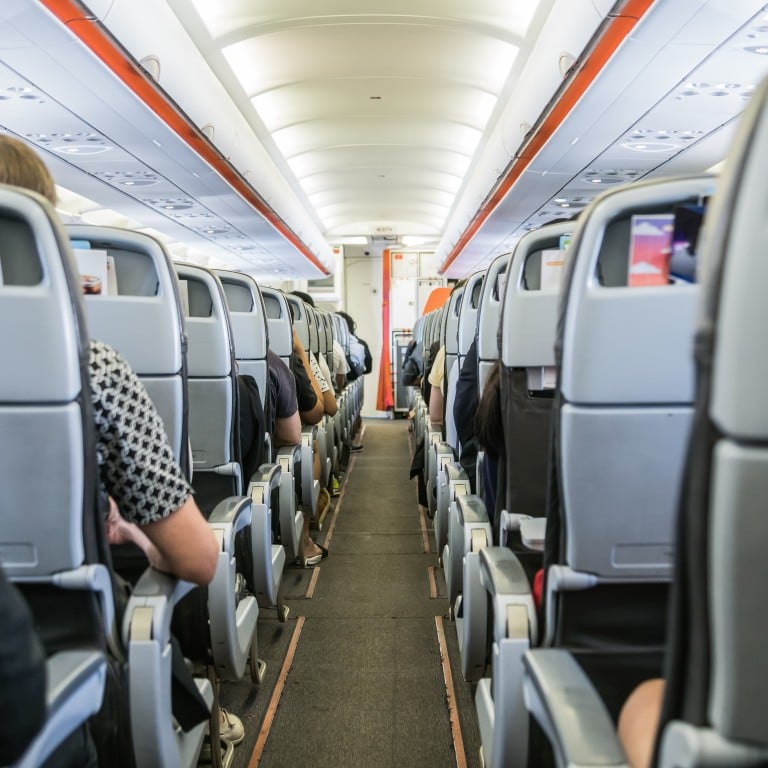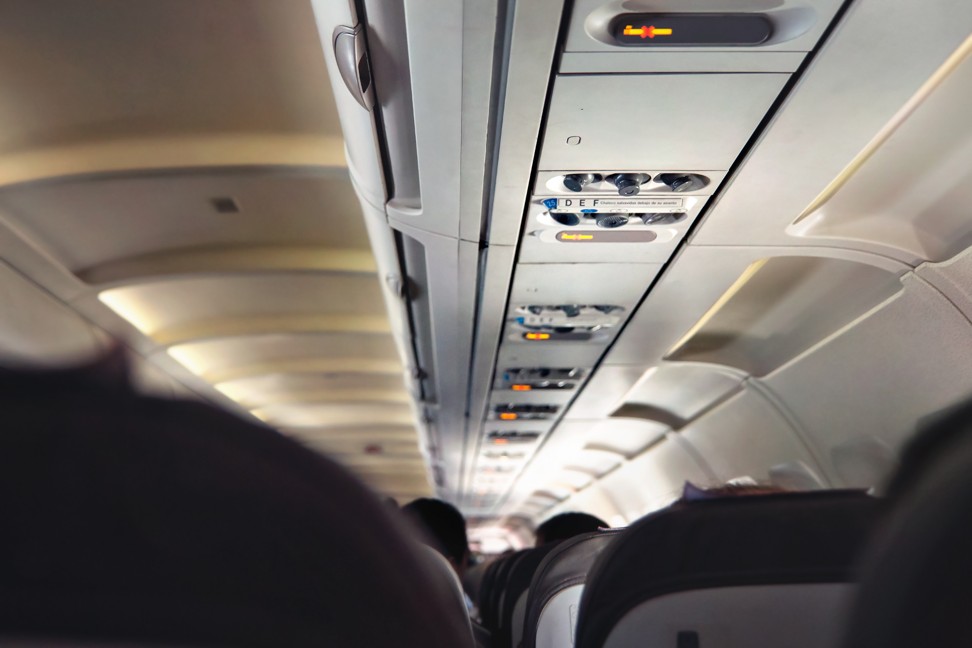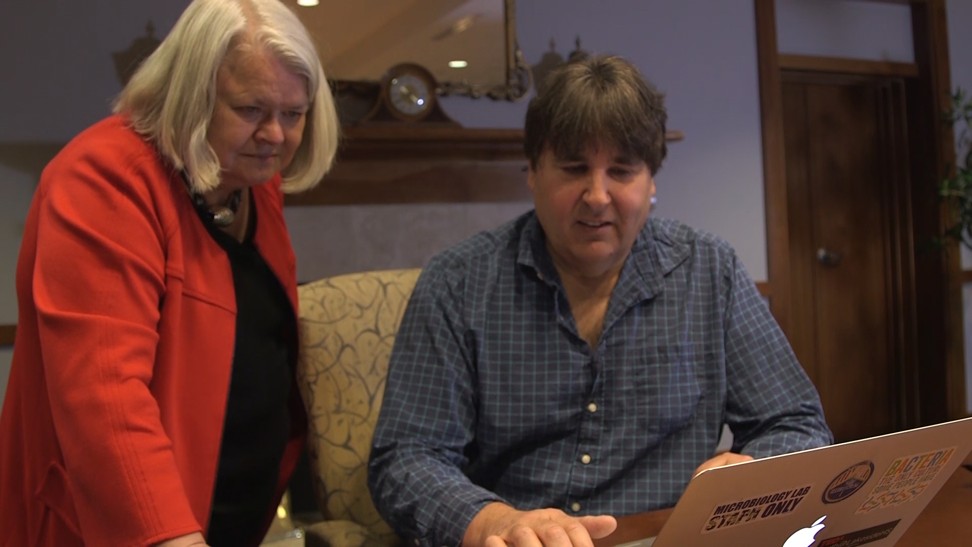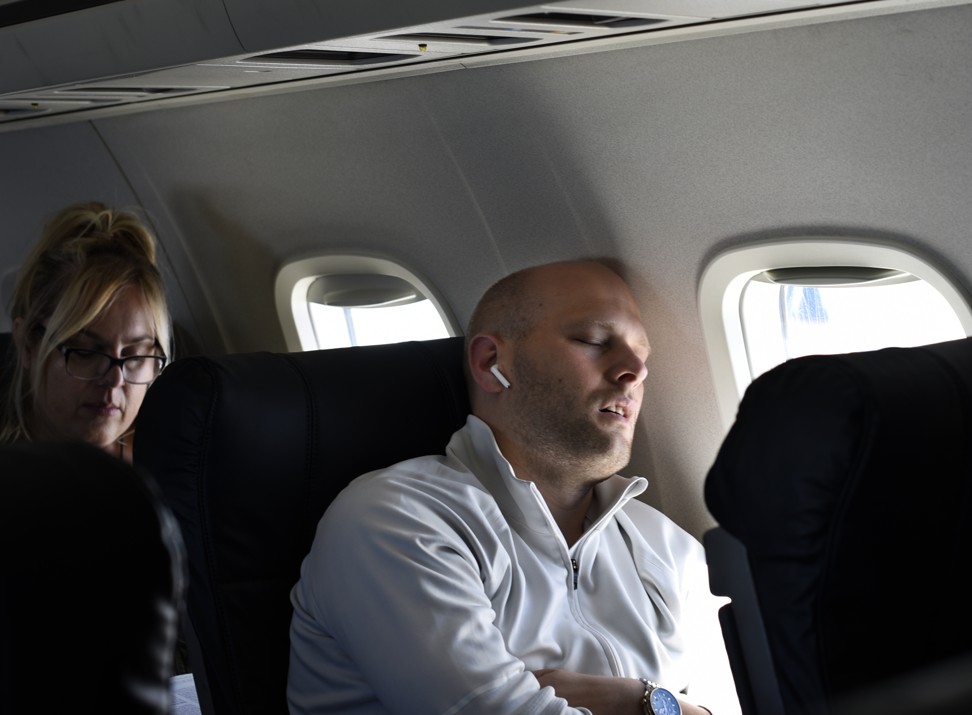
Coronavirus: how to lower the risk of infection while flying – and remember, the air in aircraft cabins is much fresher than in your home or office
- Air in an airliner cabin is changed every two to three minutes, making it fresher and freer from disease-causing pathogens than the air in your home or office
- Someone within a metre of you who is infected and coughs or sneezes can pass on flu or coronavirus, so sitting in a window seat may put you out of range
Cabin air is changed every two to three minutes, that is 20 to 30 times every hour, according to Zhu Tao, deputy director of the flight standard department under China’s Civil Aviation Administration. At a news conference last month, he also noted that cabin ventilation systems are designed for vertical, not horizontal, air flow, which effectively reduces the risk of a virus spreading on a plane.
This is because human-to-human transmission of the new coronavirus is believed to occur mainly through droplets, which generally are not affected by air flowing through a space, so they fall fairly close to where they originate – usually within a metre.
That is why the World Health Organisation defines “contact” with an infected passenger on a plane as having been seated within two to three rows of that person. The infection risk for those sitting outside that zone is much lower.

Howie Weiss, a professor of biology and mathematics with Pennsylvania State University’s Centre for Infectious Disease Dynamics, is another American expert on the subject. Five years ago, when he taught at the Georgia Institute of Technology, he did a study, in collaboration with Emory School of Public Health, on routes of infectious disease transmission in an aeroplane cabin.
US aeroplane manufacturer Boeing funded the study in order to know more about how these illnesses might spread on board an airliner.
There’s a reasonable chance that [a sick person] will infect the passengers seated within a metre. The transmission [chance] to anyone else is relatively small
Ten domestic flights within the United States of three to five hours duration, and carrying about 1,500 passengers and cabin crew, were involved in the study, for which Boeing 757 single-aisle planes with three seats on each side were used.
“We had 10 graduate students on each flight who recorded all the behaviours, frequency of movements and [location] of all the passengers and crew in the economy cabin. The data [told] us who was within a metre of whom at any instant in time. We did realistic modelling [based on the data],” Weiss says.
The study focused on the transmission of flu or other respiratory infections spread mainly through droplets.

“The droplets will fall within a metre from [where] one coughs,” Weiss says. “There’s a reasonable chance that [a sick person] will infect the passengers seated within a metre. The transmission [chance] to anyone else is relatively small.”
The study showed that the window seat is the best seat to take to reduce the risk of infection, Weiss says.
“[We found out that] if I’m seated in the aisle, I’m always within one metre of anyone walking down the aisle. The passenger seated by the window is farther away than a metre. That means if he doesn’t move, he is not going to have close contact, or one-metre contact, with anyone walking down the aisle.”
However, Weiss notes that sitting by the window is no protection if the plane’s configuration has only two seats in the window column.
“If you take a plane that is a two-five-two configuration, [with two aisles and] only two seats across in one section of the plane, [the window seat passengers] are within a metre of anyone walking down the aisle.”

Weiss says his study did not cover indirect transmission, in which a pathogen is transmitted by a passenger touching an object which was previously touched by an infected person.
An example: “A sick person coughs on his hands, goes to a lavatory, turns the doorknob and another person follows him, touches the doorknob and [afterwards] his face, eyes or nose. This is easy to prevent by washing the hands thoroughly. If it’s impractical to wash hands thoroughly after touching any surface, then one should use hand sanitiser whenever he touches any surface on a plane.”
Smith, in his Ask The Pilot blog, writes: “Unless you’re sitting very close to an infected person, chances of getting infected [in-flight] are low. And when people do become ill from flying, it’s usually from something they touch, not from something they breathe. A little hand sanitiser is probably a better safeguard than the masks I occasionally see passengers wearing.”

Simple precautionary steps to protect yourself on a flight
1. Avoid sitting near people with symptoms of respiratory illness.
2. Take a window seat far from the aisle.
3. Avoid walking around the plane.
4. Avoid touching items on the plane.
5. Use hand sanitiser upon returning to your seat after using the lavatory. Even if you followed hand-washing guidelines, using soap for at least 20 seconds, you may have touched a germ-laden handle or overhead bin afterwards.

